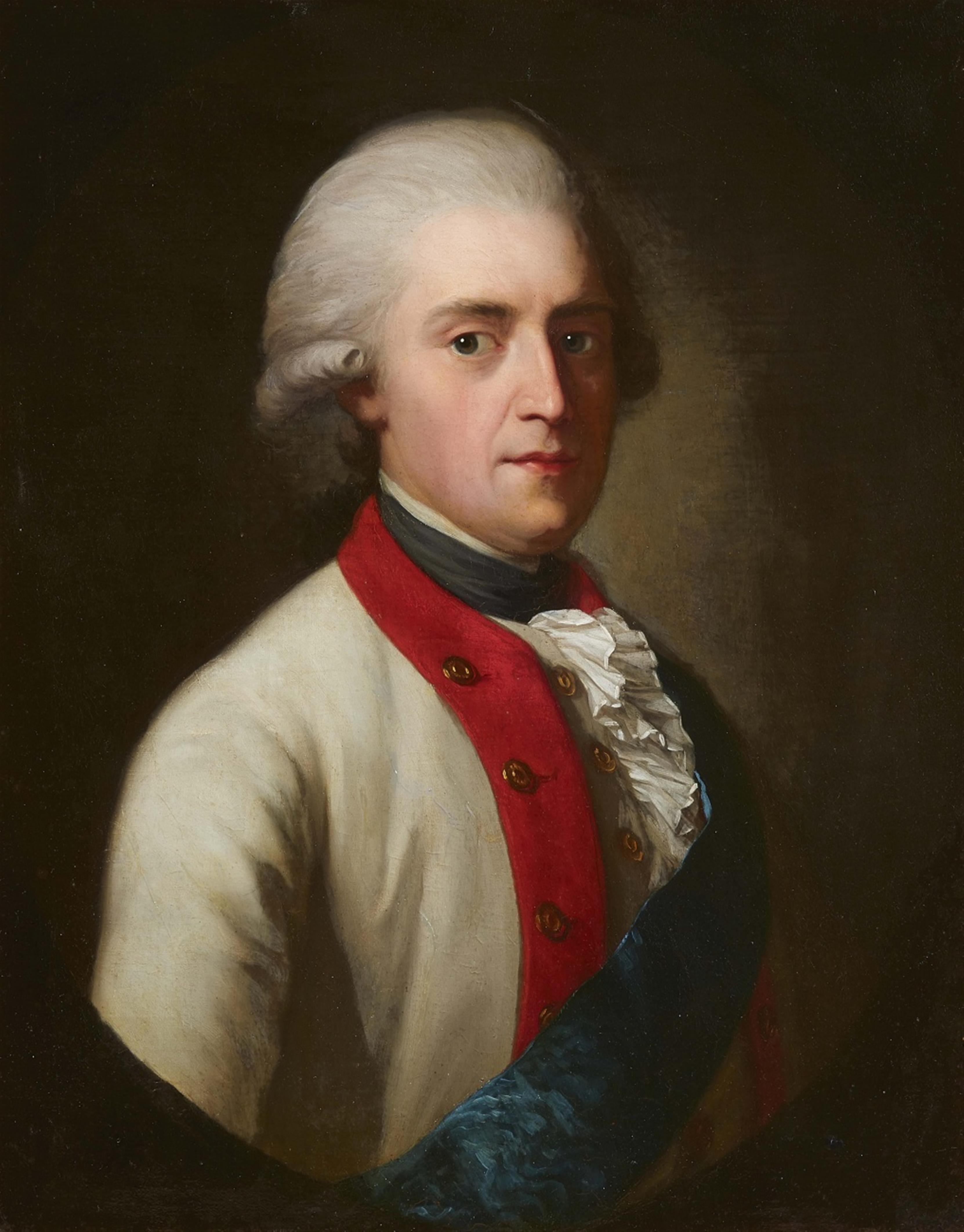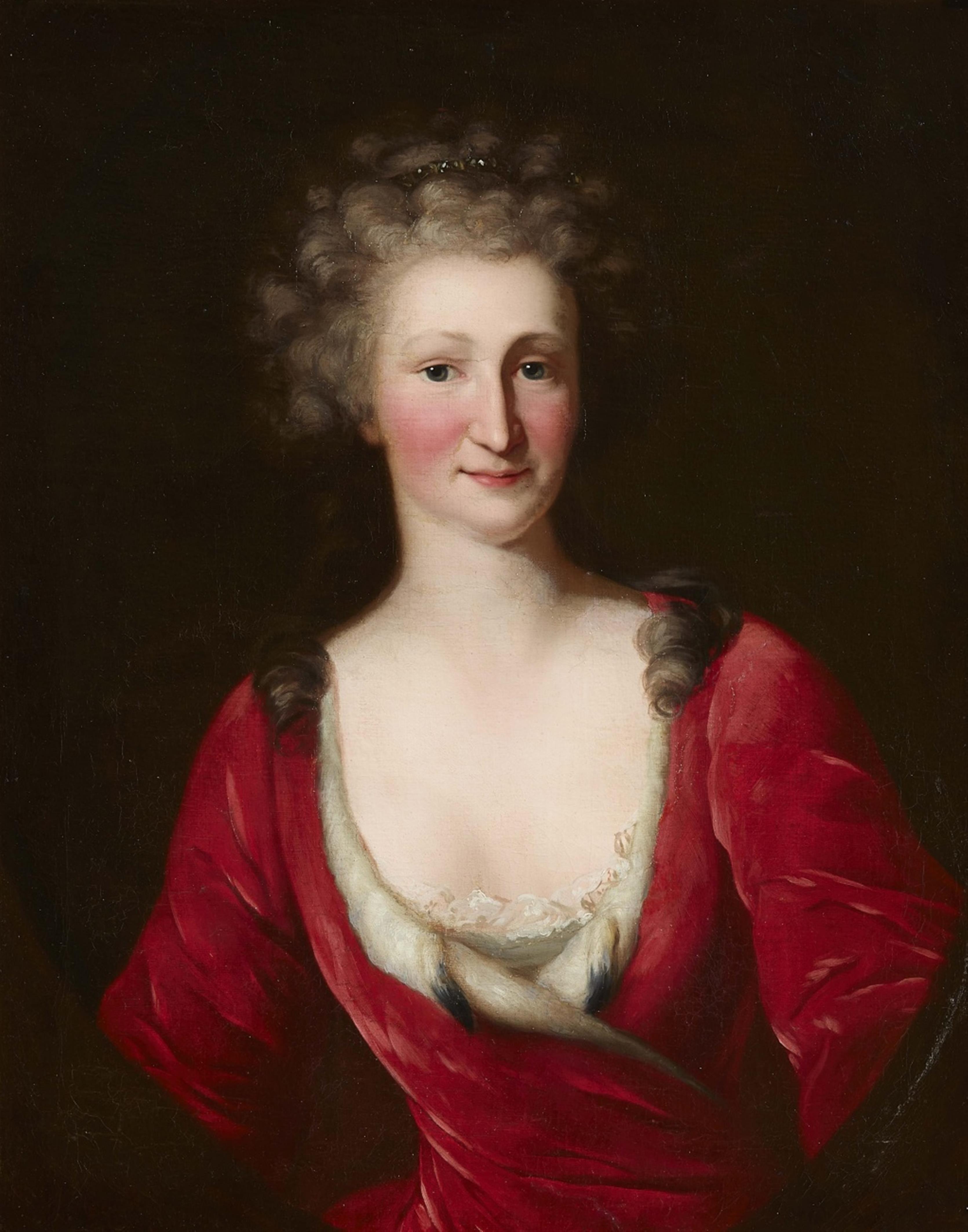Anton Graff, copy after
Two Portraits of the Saxon Electoral Couple Friedrich August and Maria Amalia Auguste, née Duchess Palatinate of Zweibrücken-Birkenfeld-Bischweiler
Oil on canvas (relined). Each 73.5 x 59.5 cm.
With labels from an exhibition of the Sächsisches Kunstverein in Dresden to the backs of both stretchers.
Friedrich August (1750-1827), known as "the Just", was the son of Elector Friedrich Christian of Saxony, who ruled for just 74 days before succumbing to smallpox in 1763. Friedrich August became Elector Friedrich August III of Saxony at a very young age following his father's premature death. He later became King of Saxony after Napoleon raised the Electorate of Saxony to a kingdom in 1806. In 1769 he married Maria Amalie Auguste (1752-1828) of the Wittelsbach house, who was Countess Palatinate of Zweibrücken-Birkenfeld-Bischweiler and a niece of the Electoress Elisabeth Auguste of Palatinate. Since the couple bore no sons, Frederick August was succeeded as King by his brother Anton "the Kind" following his death in 1827.
Provenance
The Krug zu Nidda Collection, Schloss Frohwein. - Confiscated during the Russian occupation and presented to the Museum der bildenden Künste Leipzig in 1946. - Returned to the Krug von Nidda family in 1997.
Literature
Museum der bildenden Künste Leipzig. Katalog der Gemälde 1995, ed. by Herwig Guratzsch & Dietulf Sander, Stuttgart 1995, p. 43, nos. 1787 and 1788.




